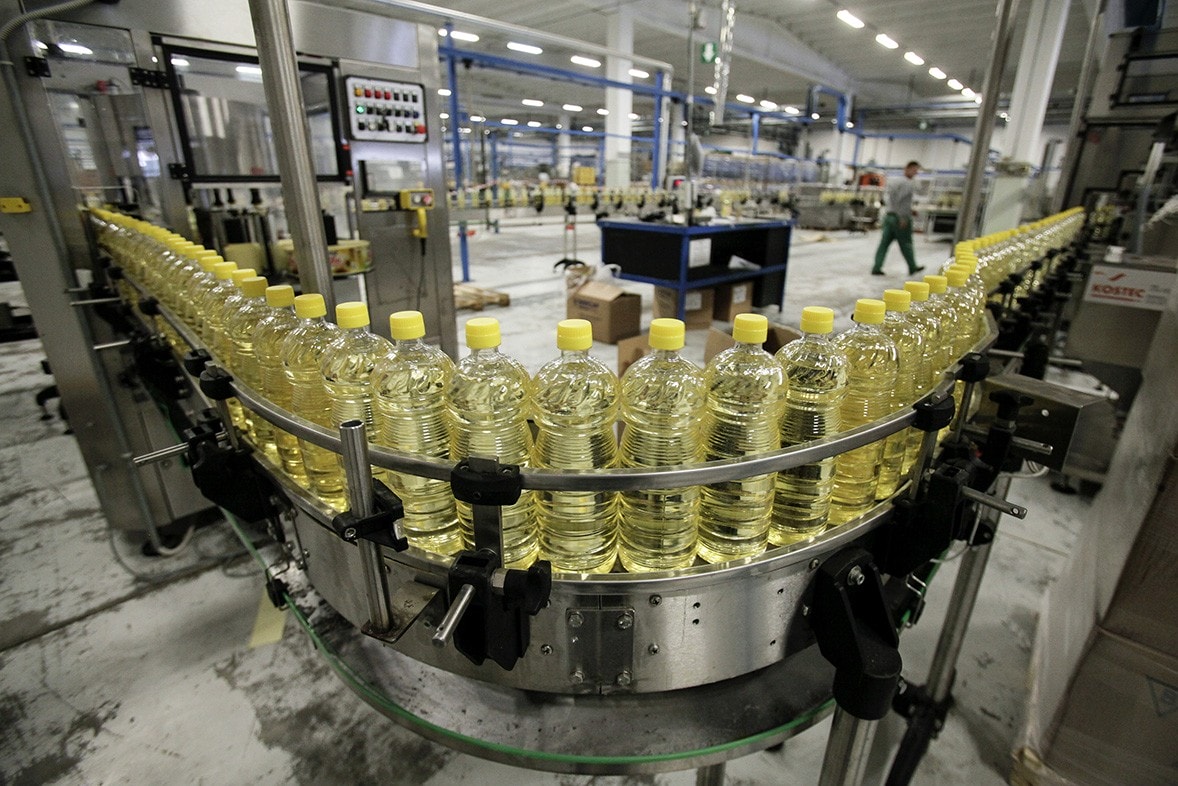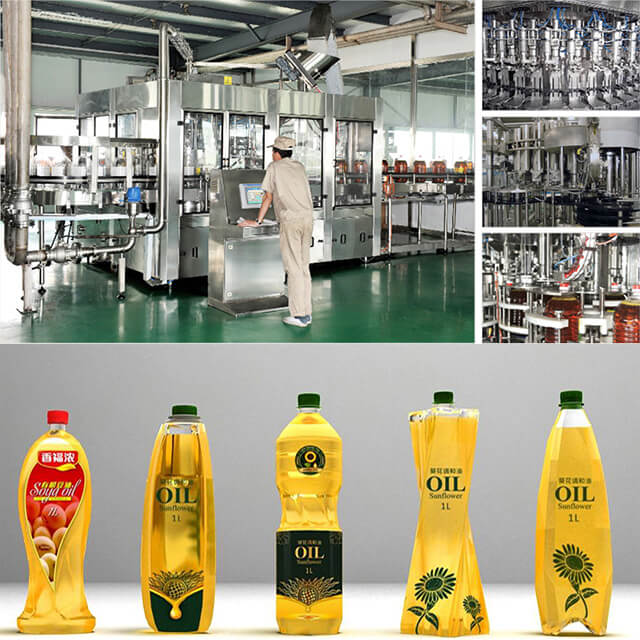Edible oil filling machines are an essential part of the oil packaging process, playing a crucial role in the accurate and efficient filling of containers. From small-scale production to high-capacity industrial operations, these machines ensure that edible oils such as olive oil, sunflower oil, and vegetable oil are packaged to meet industry standards. As consumer demand for quality products grows, oil manufacturers must ensure their packaging processes are efficient, precise, and hygienic.

Why Optional Functions Matter
While basic edible oil filling machines handle the core task of filling containers, optional functions add significant value by improving accuracy, efficiency, and overall production quality. Optional functions allow manufacturers to customize machines based on their production needs, handling different types of oil, bottle sizes, and packaging requirements. These add-ons also help to reduce manual labor, prevent contamination, and ensure product consistency, ultimately enhancing the performance of the production line.
Key Optional Functions for Edible Oil Filling Machines
1. Automatic Cap Feeding and Capping System
Importance of Consistent Capping: An automatic cap feeding and capping system ensures uniform sealing of bottles without the need for manual intervention. Proper sealing is vital in preventing spillage, preserving product freshness, and maintaining consumer confidence. Automating the capping process also reduces labor costs and minimizes the risk of human error, ensuring that each container is securely sealed.
Preventing Spillage and Contamination: Ensuring that every bottle is properly capped not only avoids leakage but also prevents contamination. Inadequate sealing can allow external particles or bacteria to enter, compromising the quality and safety of the oil. An automatic capping system eliminates this risk by applying the correct amount of force to seal each bottle consistently and effectively.
2. Weight-Based Filling System
Precision in Oil Filling: Weight-based filling systems are essential for maintaining accuracy in filling edible oils. Rather than relying on volumetric measurements, these systems use weight to ensure that the exact quantity of oil is filled into each container. This method reduces overfilling or underfilling, thereby minimizing product waste and ensuring compliance with industry standards, especially for high-value oils like extra virgin olive oil.
Adjusting to Different Bottle Sizes: Weight-based systems are highly adaptable, making it easy to switch between different bottle sizes. Whether filling small retail bottles or large bulk containers, the system automatically adjusts the fill weight according to the specified bottle size, providing manufacturers with flexibility to meet diverse packaging needs.
3. Anti-Drip Nozzles
Preventing Oil Drips and Wastage: Anti-drip nozzles are designed to stop the flow of oil immediately after filling, preventing any drips that could cause product wastage or mess on the production line. In industries where cleanliness and precision are paramount, these nozzles ensure a smooth and efficient filling process.
Reducing Cleaning Downtime: By eliminating the occurrence of drips and spills, anti-drip nozzles also reduce the need for frequent cleaning. This minimizes machine downtime, allowing the production process to run more efficiently and without unnecessary interruptions caused by oil leakage.
4. Bottle Positioning System
Ensuring Accurate Filling Alignment: A bottle positioning system ensures that each container is correctly aligned under the filling nozzles before the filling process begins. Accurate alignment is essential for preventing spillage and ensuring that every bottle is filled evenly and precisely.
Reducing Errors and Spillage: Properly positioning the bottles reduces the likelihood of filling errors, such as missed or overfilled bottles. This, in turn, lowers the risk of product wastage and ensures that the filling machine operates at peak efficiency without delays caused by manual adjustments or corrections.
5. Heated Filling for High-Viscosity Oils
Handling Different Oil Types: For oils like coconut oil or palm oil, which tend to solidify at room temperature, heated filling systems are crucial. These systems keep the oil in liquid form during the filling process, ensuring that it flows smoothly into containers without clogging or delays.
Consistent Flow Rate: By maintaining a constant temperature, heated filling systems ensure a consistent flow rate, preventing the machine from slowing down or becoming inefficient due to thick or solidified oil. This consistency is key to maintaining the speed and accuracy of the filling process.
6. Inline Filter System
Ensuring Oil Purity: An inline filter system helps remove any impurities from the oil before it is filled into bottles. This is particularly important for high-quality oils, where maintaining purity is a priority. The filter ensures that particles or contaminants are removed, ensuring that only clean, pure oil reaches the consumer.
Enhancing Product Quality: By filtering out impurities, the inline filter system enhances the quality of the final product. This is vital for maintaining brand reputation and consumer trust, as well as complying with food safety standards.
7. PLC Control System with Touchscreen Interface
Ease of Operation: A programmable logic controller (PLC) system with a touchscreen interface simplifies the operation of the filling machine. Operators can easily monitor and control the machine’s functions, making adjustments in real time with minimal effort. This user-friendly system ensures that even complex production lines can be managed efficiently.
Real-Time Data Monitoring and Control: The PLC system allows operators to track production data and machine performance in real time. This capability provides valuable insights into production efficiency, helping to identify potential issues early and make necessary adjustments to optimize performance.
8. Nitrogen Flushing System
Extending Shelf Life: Nitrogen flushing is an optional feature that can significantly extend the shelf life of edible oils. By displacing oxygen with nitrogen before sealing, the system prevents oxidation, which is a major cause of oil spoilage. This is especially useful for oils that are sensitive to oxygen exposure, such as olive or flaxseed oil.
Maintaining Product Freshness: In addition to extending shelf life, nitrogen flushing helps preserve the flavor, color, and nutritional value of edible oils. This feature is essential for ensuring that the oil retains its freshness from production to consumption, enhancing consumer satisfaction.

Additional Optional Features for Customization
1. Automatic Labeling System
Streamlining the Packaging Process: An integrated automatic labeling system can streamline the packaging process by applying labels to bottles immediately after filling and capping. This reduces manual labor and ensures that branding, product information, and regulatory details are consistently and accurately displayed on every container.
2. Bottle Counting and Reject System
Ensuring Quality Control: A bottle counting and reject system helps maintain product quality by automatically counting filled bottles and rejecting defective ones. This system minimizes the need for manual inspection, ensuring that only properly filled and sealed bottles move forward in the production line.
3. Multiple Filling Heads
Increasing Production Speed: Machines with multiple filling heads allow several bottles to be filled simultaneously, significantly increasing production speed. This feature is particularly useful for large-scale operations that require high output, reducing bottlenecks and improving overall efficiency.
Benefits of Optional Functions in Edible Oil Filling Machines
Improved Efficiency and Productivity: Incorporating optional functions into edible oil filling machines enhances efficiency by reducing manual labor, minimizing downtime, and improving machine performance. Features like multiple filling heads and automatic capping systems increase production speed, while anti-drip nozzles and inline filters reduce waste.
Better Accuracy and Precision: Functions like weight-based filling and bottle positioning systems improve the accuracy of the filling process, ensuring that each bottle receives the correct amount of oil. This precision reduces product loss and ensures compliance with industry regulations.
Enhanced Product Quality: Optional functions such as nitrogen flushing systems and inline filters help maintain the quality and freshness of edible oils. These features ensure that the product remains pure and uncontaminated, meeting consumer expectations for high-quality edible oils.
Conclusion
Selecting the right optional functions for your edible oil filling machine can significantly enhance the efficiency, accuracy, and quality of your production process. Each feature, from automatic capping to nitrogen flushing, plays a vital role in optimizing machine performance and ensuring consistent product output.
Manufacturers should carefully consider their specific production requirements, the type of oil they are handling, and their packaging goals when choosing optional functions. By customizing the machine to meet these needs, producers can streamline operations, reduce waste, and ensure that their edible oils meet the highest quality standards.













